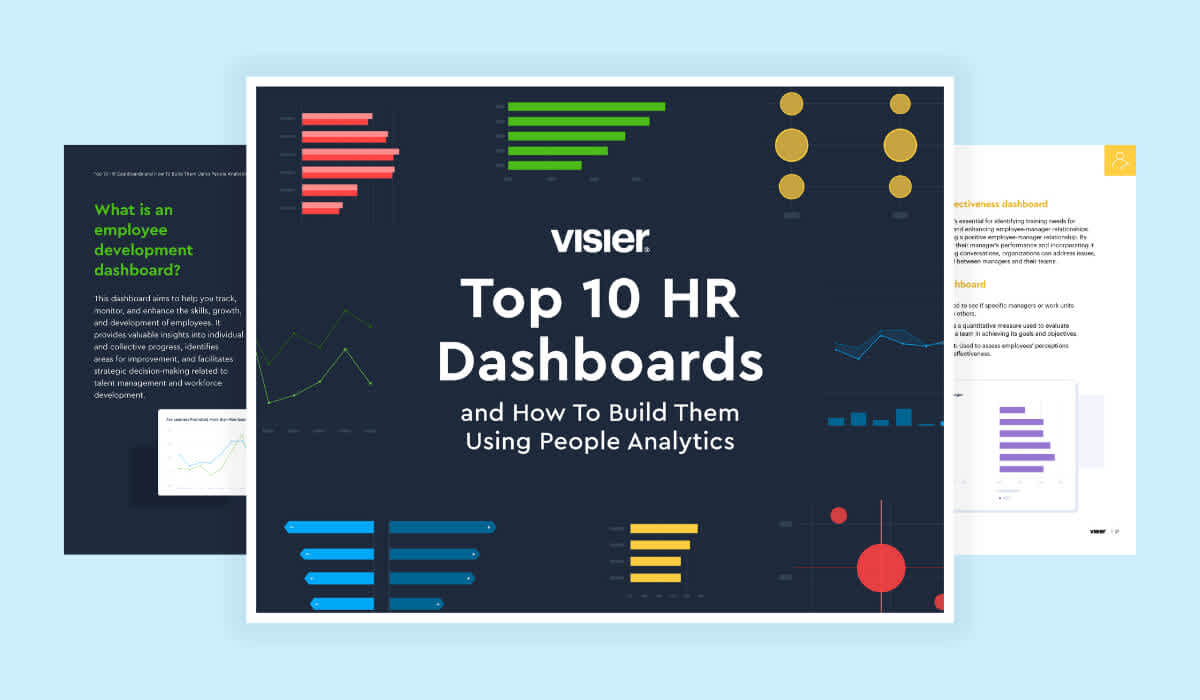The Top 10 Strategic Talent Acquisition Metrics
These are the top 10 strategic talent acquisition metrics that have the highest chance of getting your CEO’s attention.

HR and recruiting professionals often struggle to align their metrics with the strategic mindset of CEOs. And, as a result, the metrics reported to the executive team often fail to prompt positive action. That's because CEOs are laser-focused on the strategic goals of the organization.
So, if your metrics don’t directly and unambiguously cover strategic goals like increasing revenue, productivity, or innovation, they simply won’t drive executives to act. In fact, one survey found that only 12 percent of CEOs had faith in metrics. That is because we report mostly tactical metrics that focus on costs, rather than the strategic ones that cover HR areas that impact corporate revenue.
Here are the top 10 talent metrics that I have found to have the highest chance of getting your CEO’s attention.

The top 10 strategic talent acquisition metrics to track
Revenue per employee
The improvement in the performance of new hires (quality of hire improvement)
Performance turnover in key jobs
Dollars of revenue lost due to position vacancy days
Track a metric covering the highest impact current “hot” talent problem at your firm
A contribution to productivity survey to identify which HR programs helped to increase productivity
The percentage of HR strategic goals that were met
New hire failure rate
Applications per employee
Diversity hires in customer-impact positions
1. Revenue per employee
The most effective way for measuring the productivity and innovation output value of your workforce. This metric is widely accepted by CFOs as the standard workforce productivity metric. It focuses on the value of the output of a firm’s workforce (i.e. revenue dollars), and the best firms produce a higher revenue per employee number.
The formula is simple. It’s the total yearly corporate revenue divided by the average number of full-time employees. And the best part about this metric is that it uses publicly available information, so it’s easy to compare firms in the same industry. Revenue per employee numbers for all publicly listed firms can be found at Marketwatch.
The best part about this metric is that it uses publicly available information, so it’s easy to compare firms in the same industry. (Plus, knowing this number can help determine which employees should receive merit increases, a proven tool for keeping top talent at your organization.)
2. Quality of hire improvement (The improvement in the performance of new hires)
This overall talent management measure originates in recruiting. If you hire a volume of new employees, and each one performs a few percentage points better than those they replace, the productivity of the team will improve. Simplify the measurement process and don’t attempt to measure the performance improvement of all new hires.
Instead focus on those jobs that are already measured in dollars or quantified with numbers, like sales, collections, and call center reps. In addition to the performance improvement percentage of new hires, this measure can be augmented with new-hire retention rates and the percentage of diversity hires in key jobs. Work with the CFO to estimate the total revenue increase as a result of better-performing new hires.
3. Performance turnover in key jobs
Losing top performers is expensive, so measure the percentage of employees in key jobs who voluntarily quit each month and over the whole year. However, weigh your turnover by their performance because losing top performers is much more expensive.
So, put a weight (i.e. typically the percentage that the departed individual performed above the average) on high-performer turnover, so that it counts more than low-performer turnover. Once again work with the CFO’s office to calculate and report the total dollar impact from top performer turnover in key jobs
4. Dollars of revenue lost due to position vacancy days
This recruiting metric focuses on the revenue and productivity loss as a result of slow recruiting. When an employee quits, there is a loss of productivity and revenue until the position is filled. And with a slow hiring process, those vacancy days increase. And, once again, because the highest impact from vacancy days occurs in revenue jobs, focus your measure on them.
Calculate the dollar loss per day by dividing the average total yearly revenue generated by an employee, in a targeted job, by the number of working days. Report the decrease in vacancy days and the dollar reduction in the amount of lost revenue.

5. Track a metric covering the highest impact “hot” talent problem in your organization
In addition to the fixed metrics already covered, report metrics covering one or more currently hot talent problems on your executive committee’s agenda that are keeping your executives up at night. Start with the highest impact areas including: increasing innovation, onboarding, developing leaders, diversity in customer impact positions, key skills shortages, and increasing internal movement.
6. A contribution to productivity survey to identify which HR programs helped to increase productivity
You can best determine the impact of individual HR programs like training and onboarding through a survey of managers and employees. Survey a sample of managers and employees and ask each how much each HR program contributed to their reaching their productivity goals. Use a 1 to 10 scale, with a 10 indicating that the function exceeded their expected contribution. For any program getting a rating of eight or lower, ask the surveyed person to estimate the dollar amount of their reduced productivity.
You can best determine the impact of individual HR programs like training and onboarding through a survey of managers and employees.
7. The percentage of HR strategic goals that were met
All strategic functions should meet their goals. So every six months the HR function should report to executives the percentage of its strategic goals that were met or exceeded. For each major sub-function like recruiting, also list the strategic goals and which ones were met.
Strategic Metrics for the recruiting function
In addition to the above quality of hire and vacancy day measures that cover recruiting, recruiting leaders should also measure and report the following three high-revenue-impact metrics.
8. New hire failure rate
The worst hire of all is any new hire who must be terminated within the first six months. Not only will you have to rehire for the position but you must also add to that cost the damage that a bad hire probably created. This metric is calculated based on the percentage of new hires who were terminated or who were asked to leave during the first 6 to 12 months after they start.
Failure analysis should be conducted immediately on each major new hire failure in order to determine what went wrong during that hiring process. You should also work with the CFO’s office to calculate a credible dollar amount of the annual cost of your new-hire failures. Some firms also consider not filling the position as a failure. But also consider adding as failures any new hire who doesn’t show up on the first day, who fails new hire training, who quits within six months, or who must be put on a performance management program as a hiring failure.
9. Applications per employee
Since the purpose of an employer brand is to increase the volume of applications for your jobs, the target for a highly successful employer brand is that the number of applications that your firm receives each week should equal your number of employees.
10. Diversity hires in customer-impact positions
In your customer impact jobs, if your workforce reflects the diversity of your customers, your products and services will sell better. So measure recruiting’s contribution to increasing diversity in these critical jobs. In most cases, the definition of diversity should be expanded beyond the legal definition to include diverse thinkers and international hires.
In your customer impact jobs, if your workforce reflects the diversity of your customers, your products and services will sell better.
Final thoughts
It turns out that in addition to providing your CEO with the right HR metrics, there are some other things that you need to do if you want to guarantee that they will act. The first is to quantify the impact of the metric area on revenue dollars, so that your HR metric result is easily comparable to other business metrics and problems. Next, show a predictive trendline because if executives think that what you’re presenting is only a one-time problem, they simply won’t act on it. Showing that the trajectory of the problem is likely to get worse and that the cost will likely go up exponentially will definitely spur executive action.
Finally, realize that once executives know that they have a high-dollar-value problem as a result of your metrics, there’s no guarantee that they will take the appropriate action. So, that means that you must provide them with a list of prescriptive solutions with your metrics. By telling them that there are workable solutions to the problem and that you know which ones work, makes it much more likely that executives and managers will act after they see a metric indicating a problem.
If you found this article helpful, please connect with me on LinkedIn. This post originally appeared on Dr. John Sullivan’s website.

More about strategic talent acquisition
How can you use engagement and performance data in talent acquisition? Discover four steps to data-driven employee retention here.
Take a look at nine key metrics for manager effectiveness that will help your organization motivate talent and reduce the high-performer resignation rate.
In this free guide, we share the top eleven metrics you should be tracking to better retain your employees.


